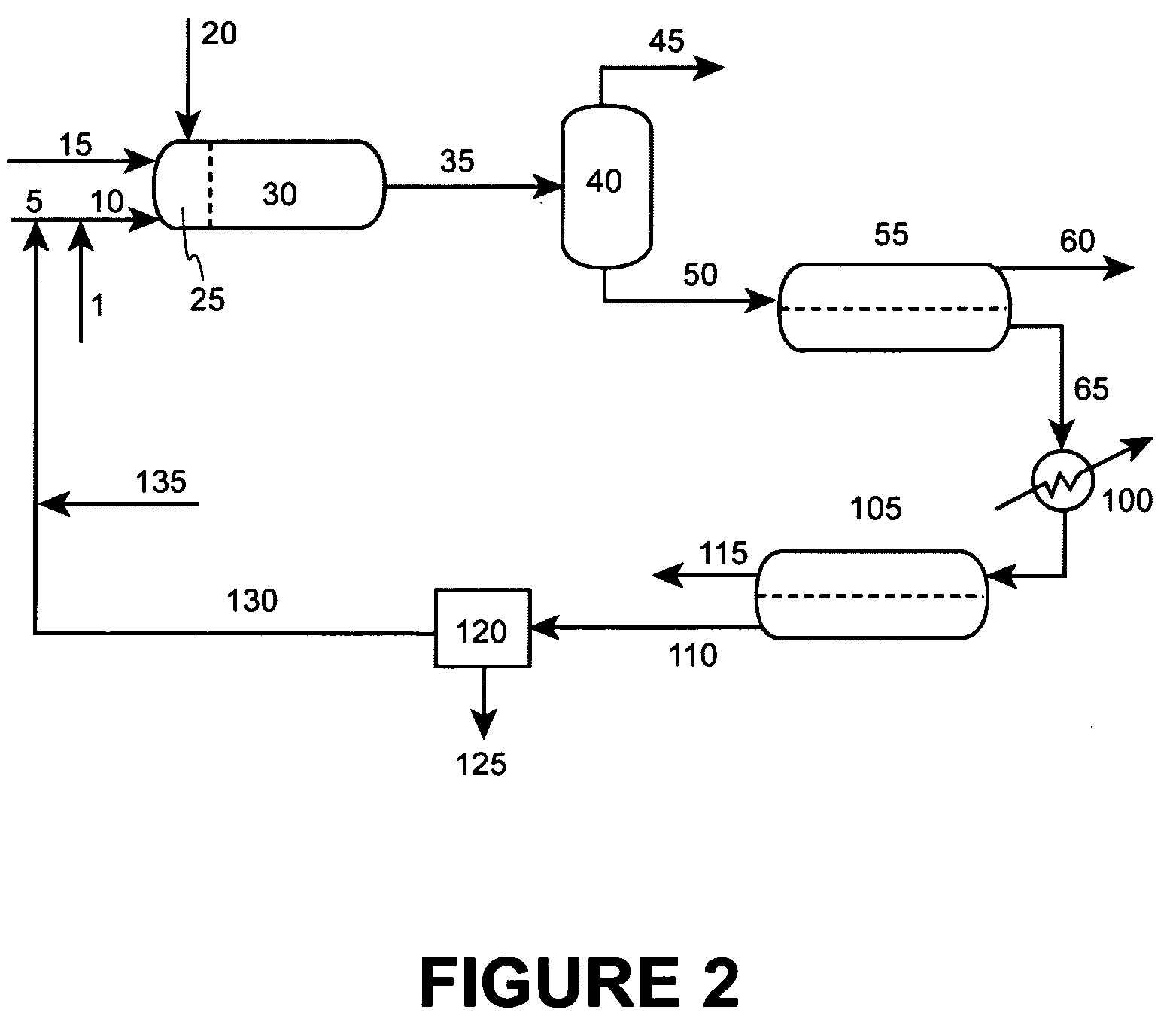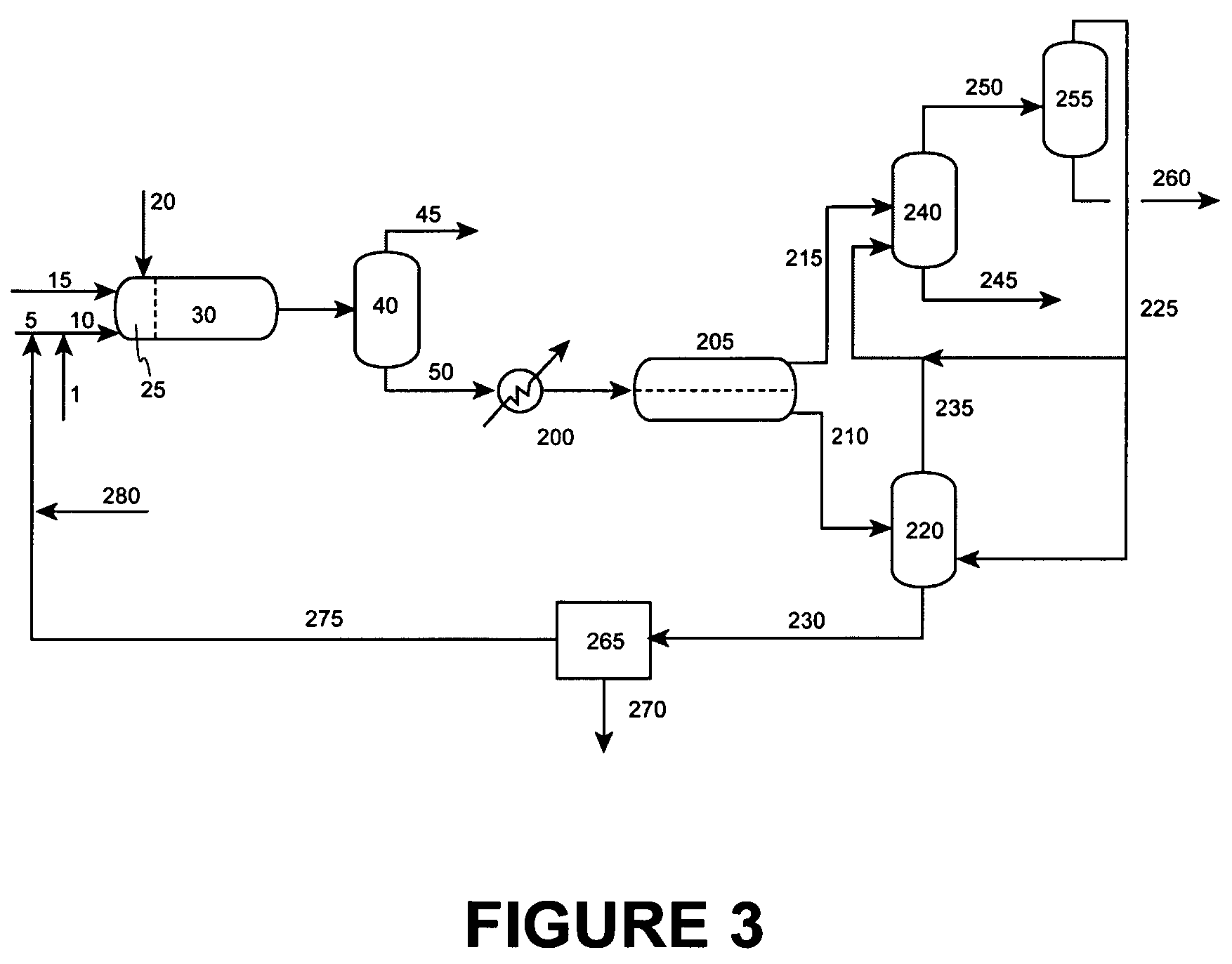Process for the desulfurization of heavy oils and bitumens
a technology of desulfurization and heavy oil, which is applied in the direction of sulfur compounds, refining with metals, aqueous alkaline solutions, etc., can solve the problems of high sulfur content hydrocarbon streams that are difficult to desulfurize by conventional methods, and can be excessively corrodive to equipment, so as to reduce the viscosity and increase the api gravity of the produced product stream
- Summary
- Abstract
- Description
- Claims
- Application Information
AI Technical Summary
Benefits of technology
Problems solved by technology
Method used
Image
Examples
Embodiment Construction
[0028]The present invention is a process for reducing sulfur content in hydrocarbon streams with in-situ regeneration of the potassium salt catalyst which may comprise potassium hydroxide, potassium sulfide, or combinations thereof. In an embodiment, the hydrocarbon feedstream to be treated contains sulfur, much of which is part of the polar fraction and higher molecular weight aromatic and polycyclic heteroatom-containing compounds, herein generally referred to as “aphaltenes” or they are associated in the emulsion phase of such asphaltene species. It should be noted here that the terms “hydrocarbon-containing stream”, “hydrocarbon stream” or “hydrocarbon feedstream” as used herein are equivalent and are defined as any stream containing at least 75 wt % hydrocarbons. Another preferred embodiment of the present invention is a process for substantially separating the desulfurized hydrocarbon product stream from a stream containing the potassium salt catalyst solution, polars, asphalt...
PUM
| Property | Measurement | Unit |
|---|---|---|
| temperature | aaaaa | aaaaa |
| temperature | aaaaa | aaaaa |
| pressure | aaaaa | aaaaa |
Abstract
Description
Claims
Application Information
 Login to view more
Login to view more - R&D Engineer
- R&D Manager
- IP Professional
- Industry Leading Data Capabilities
- Powerful AI technology
- Patent DNA Extraction
Browse by: Latest US Patents, China's latest patents, Technical Efficacy Thesaurus, Application Domain, Technology Topic.
© 2024 PatSnap. All rights reserved.Legal|Privacy policy|Modern Slavery Act Transparency Statement|Sitemap



